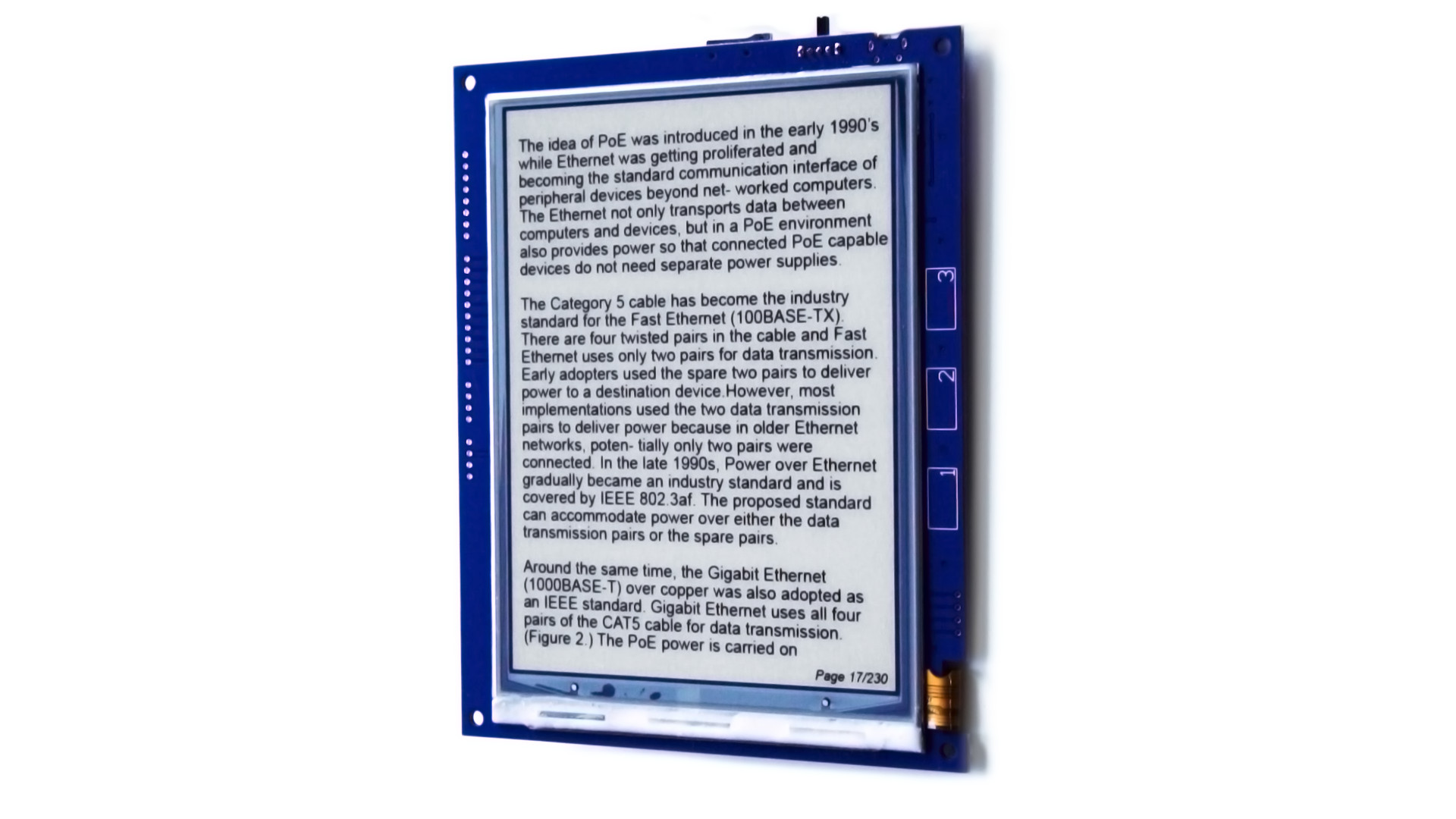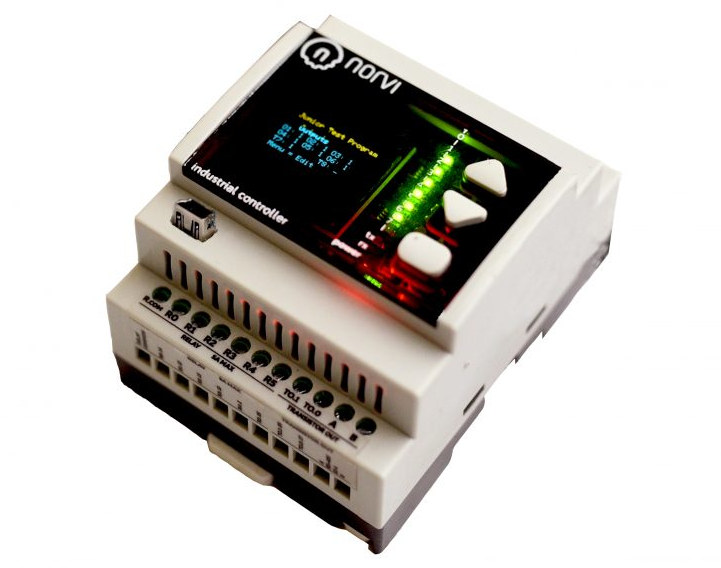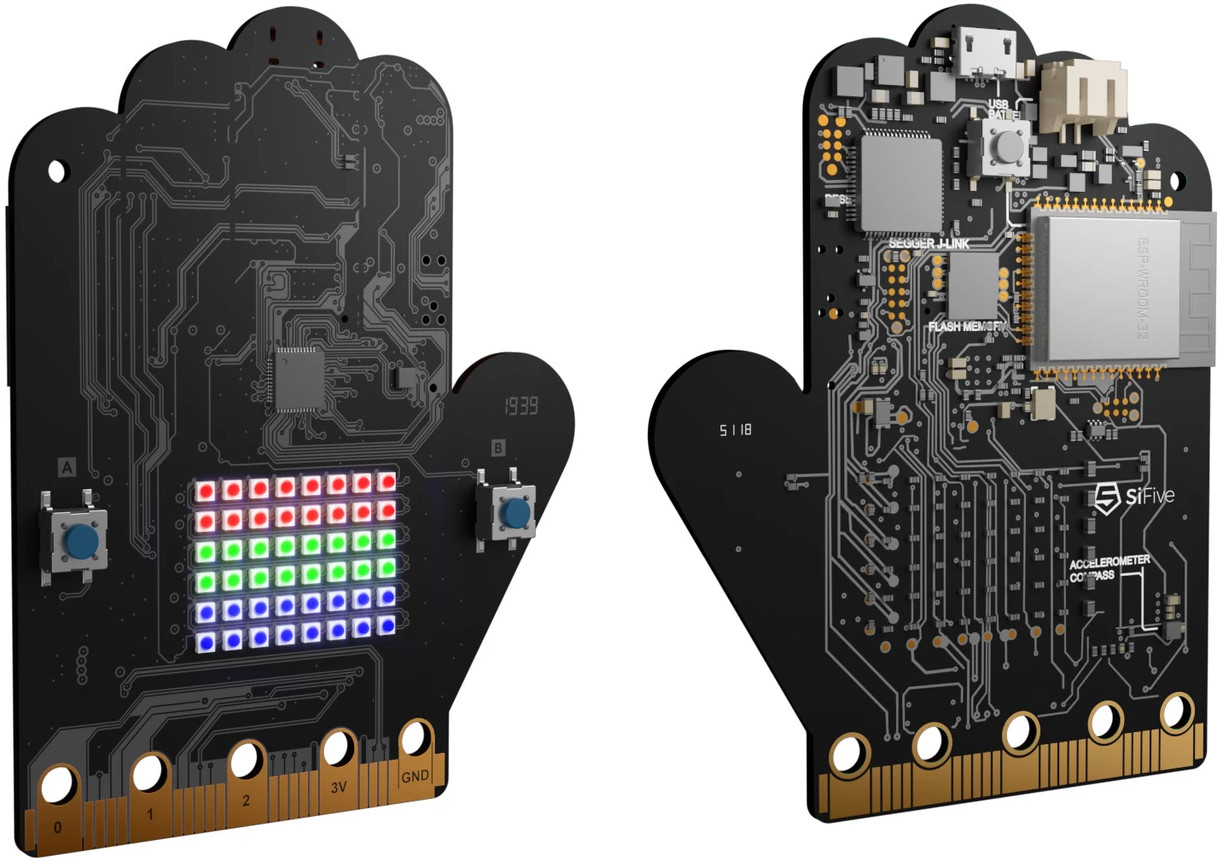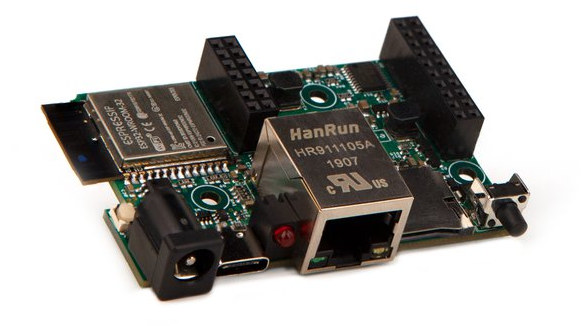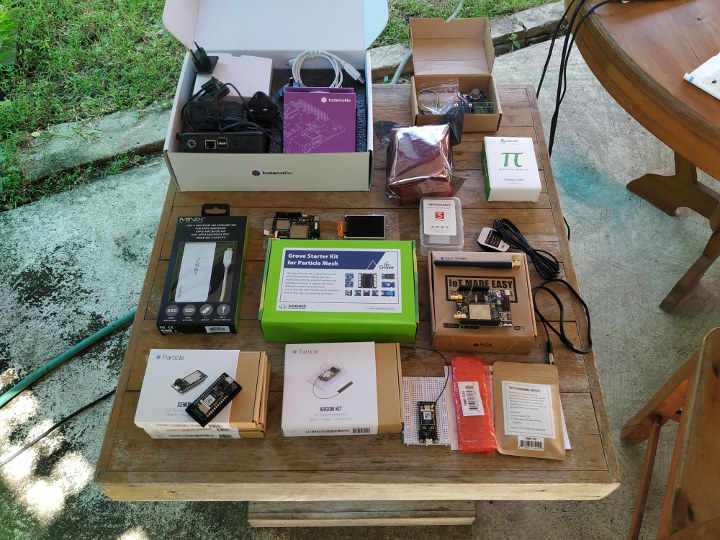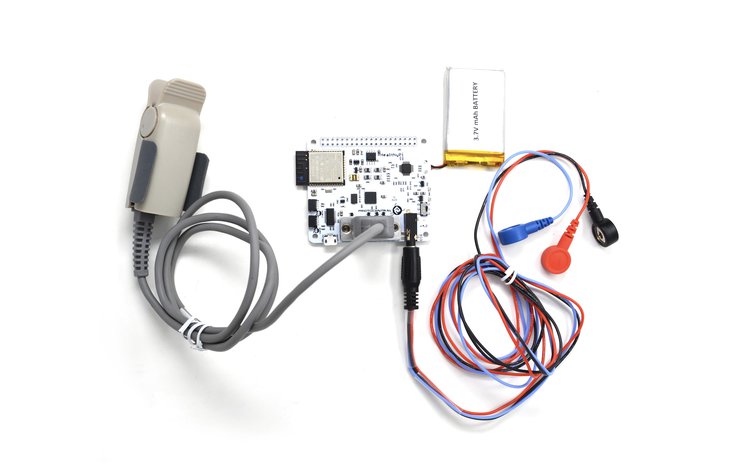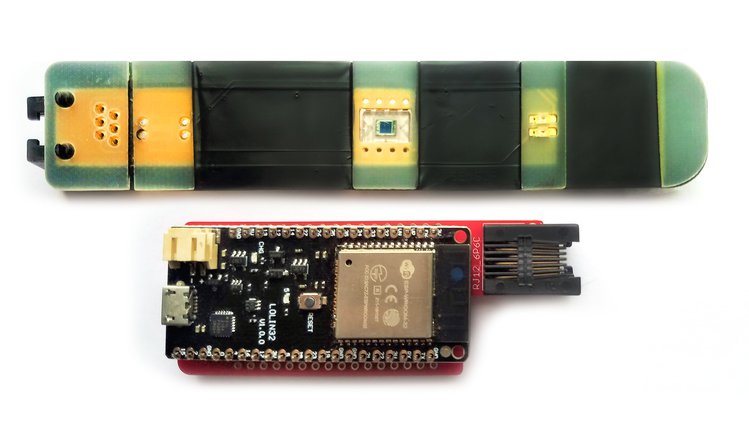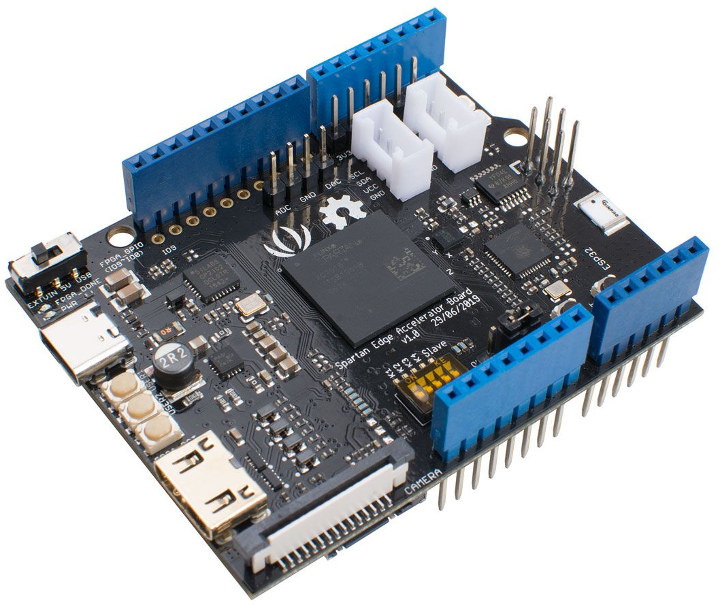Inkplate 6 wireless display is made from recycled e-Paper display taken from a used Amazon Kindle E-reader and adds WiFi (and Bluetooth) connectivity thanks to an ESP32-WROVER module featuring Espressif Systems ESP32 dual-core processor. The 6″ e-Paper display can easily be updated over WiFi, and used for a variety of applications or projects such as high-latency digital signage displays, collaborative task trackers, e-Paper typewriters, open-hardware E-readers, art projects and so on. Inkplate 6 specifications: ESP32-WROVER wireless module ESP32 dual-core Tensilica LX6 processor @ 240 MHz 8MB RAM, 4MB flash Connectivity – 802.11 b/g/n WiFi and Bluetooth 4.2 Display – 6″ e-Paper Display (ED060SC7) with 800×600 resolution taken from discarded Kindle readers; refresh time: 0.264 s; partial updates possible Storage – MicroSD card socket USB – 1x Micro USB Port for power and programming (via CH340C) Expansion EasyC / Qwiic connector with I2C Headers for power signals, I2C, SPI, ESP32’s GPIO, […]
NORVII IIoT ESP32 Industrial Controller Comes with Built-in OLED or TFT Display, DIN Rail Mount
We’ve previously covered at least one ESP32 industrial controller with TECHBASE Moduino X equipped with digital and analog I/O terminals, a 0.96″ OLED display, and support for various expansion cards for RS-485, LoRa, Sigfox… beside Ethernet, WiFi, and Bluetooth connectivity offered by the Espressif Systems chip. NORVII IIOT industrial controller – based on ESP32-WROOM-32 module – offers many of the same options as the TECHBASE model, but also integrates a choice of 0.96″ to 1.44″ OLED or TFT display, and comes with plenty of LED’s to ease troubleshooting. There are five variants from three series (AE01, AE02, and AE03) sharing the following specifications: Wireless Module – ESP32-WROOM32 with ESP32 dual-core processor @ 160 MHz, 520 Kbytes SRAM / 4 Mbit Flash, WiFi 802.11 b/g/n Bluetooth 4.2 Storage – Optional microSD card slot Display -Built-in 0.96″ OLED display. 0.96″ TFT display or 1.44″ TFT display Communication – RS-485, WiFi, Bluetooth, optional […]
SiFive Learn Inventor is a Wireless RISC-V Development Kit Inspired by BBC Micro:bit
SiFive Learn Inventor is a RISC-V educational board partially inspired by BBC Micro:bit board with the same crocodile clip-friendly edge connector, and an LED matrix. The board is also fully qualified to work with the Amazon FreeRTOS real-time operating system. Shaped in the form of a hand, the board features SiFive FE310 RISC-V processor found in the SiFive HiFive1 board, as well as ESP-WROOM-32 WiFi + Bluetooth module. SiFive Learn Inventor specifications: SoC – SiFive FE310-G003 32-bit RISC-V (RV32IMAFC) processor @ 150 MHz with 64KB of internal SRAM Storage – 512 KB flash “Display” – 6×8 “widescreen” array of RGB LEDs with 262,000 colors each; LEDs can expand off-board onto external arrays via the edge connector Wireless Connectivity – 802.11b/g/n WiFi 4 (2.4GHz) and Bluetooth 4.2 LE via an ESP32 module (ESP-WROOM-32) USB – 1x Micro USB port for power and programming/debugging Expansion A/D Converters (four) accessed via on-board coprocessor […]
esp32MX-E ESP32 Board Comes with Ethernet and USB-C Ports (Crowdfunding)
We’ve already covered several ESP32 boards with Ethernet including Olimex ESP32-GATEWAY and Silicognition wESP32, and I’ve just noticed Espressif also made its own with ESP32-Ethernet-Kit. Modtronix Engineering has another take with esp32MX-E board that beside Ethernet also exposes a USB-C port, a MicroSD card slot, and also adds an STM32F0 microcontroller acting as an I2C I/O expander. esp32MX-E specifications: Wireless Module ESP32 dual-core LX6 microprocessor at 160 or 240 MHz, 4 MB Flash, 520 KB SRAM Wi-Fi 4 802.11 b/g/n Bluetooth 4.2 BR/EDR & BLE Storage – MicroSD card slot USB – USB Type-C connector for programming, power, and Virtual COM port Expansion via 14-pin and 20-pin female headers 22x I/O pins of which 4 are inputs only. 4x 5 V tolerant I/O pins Not all I/Os are available when the SD Card is used Programmable pull-up and pull-down resistors on most inputs Secondary MCU – I²C I/O expander implemented […]
Giveaway Week Winners – November 2019
We just had another of our yearly “Giveaway week” on CNX Software with 7 prizes including Arm and RISC-V development boards, NB-IoT tracker, USB-C hub, as well as development kits based on ESP32 or ESP8266 WiSoCs. People just had to comment within a 48 hours period, and we would randomly select a winner each day. We now have all confirmed winners with a strong start from Europe, Asia catching up mid-week, before with Poland and Brazil taking the week-end prizes: Balena Fin Developer Kit – Laurent H, FRANCE WisCellular NB-IoT & eMTC GPS Tracker – Jimmy, SWEDEN MINIX NEO S1 USB-C Hub with 120GB built-in SSD – Jeroen, BELGIUM Maixduino Sipeed M1 RISC-V AI Kit – Nguyen Tung, VIETNAM ANAVI Gas Detector Starter Kit – Bumsik Kim, SOUTH KOREA Particle Mesh IoT Development Kit – Wojciech Lubicz-Lapinski, POLAND NanoPi M4V2 SBC & Metal Case Kit – Thiago Tavares, BRAZIL I […]
HealthyPi v4 Wearable WiFi Vital Signs Monitor Follows Raspberry Pi HAT Form Factor
HealthyPi v4 Campaign Starts ProtoCentral has started a Crowd Supply campaign for the HealthyPi v4, its latest vital signs monitoring dev kit. The HealthyPi v4 is wearable, wireless, and can be mounted on a Raspberry Pi. The units are all open source and stand-alone made for end-users, students as well as researchers and developers. An Improvement on HealthyPi v3 The recent increase in health-related tech has fueled ProtoCentral’s desire to bring its HealthyPi v3 up to current usability and development standards. The retail versions of the HealthyPi v4 are made specifically to work in conjunction with the Android OS for ease of use and mobility. Also, the Raspberry Pi HAT form factor is also supported in this version of the device. Articles On Health-Related Development The articles that have touched on health-related issues and topics from our archives, as well as very recently include HEGduino a neurofeedback monitor and […]
HEGduino IoT Real-time Neurofeedback Platform Aims to Increase Brain Function (Crowdfunding)
The HEGduino Alaskit has developed a way to measure the blood-oxygen levels in the brain and create a biofeedback system that is said to increase brain function. The new tech is called HEGduino and is a connection between a biofeedback method and an IoT platform. Past Reported Medical SBCs In the past, CNX has covered several health-based platforms for the Raspberry Pi (Healthy Pi HAT) and ESP32 (Hearty Patch, ECG reader) medical SBCs. HEG Particulars The HEG in HEGduino stands for Hemoencephalography, a neurofeedback technique similar to EEG measurements in brainwave activity. The difference is HEG can measure neural activity based on neurovascular coupling, which can be approached through near infrared and passive infrared techniques – both of which are ways to cerebral blood flow can be matched to metabolic activity. HEG Functions The HEG is a way to alter brain function through a series of “training” sessions based […]
Spartan Edge Accelerator Arduino Compatible Board Combines ESP32 & Spartan-7 FPGA
Xilinx Spartan FPGAs have been around for a while, and a few years ago we covered Spartan-6 FPGA boards such as Spartixed and miniSpartan6+. Seeed Studio has now launched another Xilinx Spartan board with WiFi and Bluetooth connectivity. Spartan Edge Accelerator Board follows Arduino UNO form factor and combines a more recent Xilinx Spartan-7 FPGA with Espressif Systems ESP32 WiFi + Bluetooth chip. Spartan Edge Accelerator specifications: FPGA – Xilinx Spartan-7 XC7S15 FPGA with 12.8K Logic Cells and 360Kb block RAM WiSoC – Espressif Systems ESP32 SoC with 802.11 b/g/n 2.4GHz WiFi and Bluetooth 4.1 BLE Storage – SPI flash, MicroSD card slot Video Output – Mini HDMI Video Input – CSI Camera Interface with support for OV5640 sensor USB – USB type-C port Expansion Arduino UNO headers (5V) FPGA I/O header DAC output and ADC input header (via 8-bit ADC1173 chip) 2x Grove connectors (I2C and digital I/O) Debugging […]


